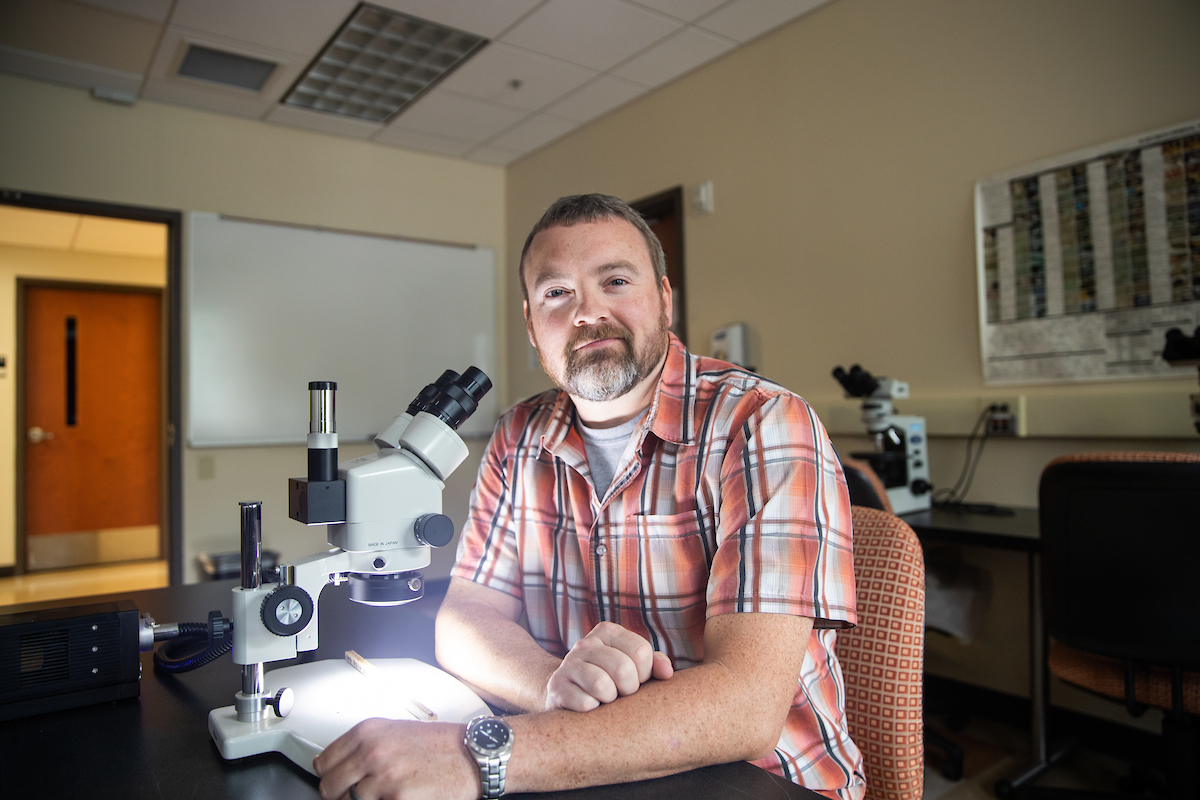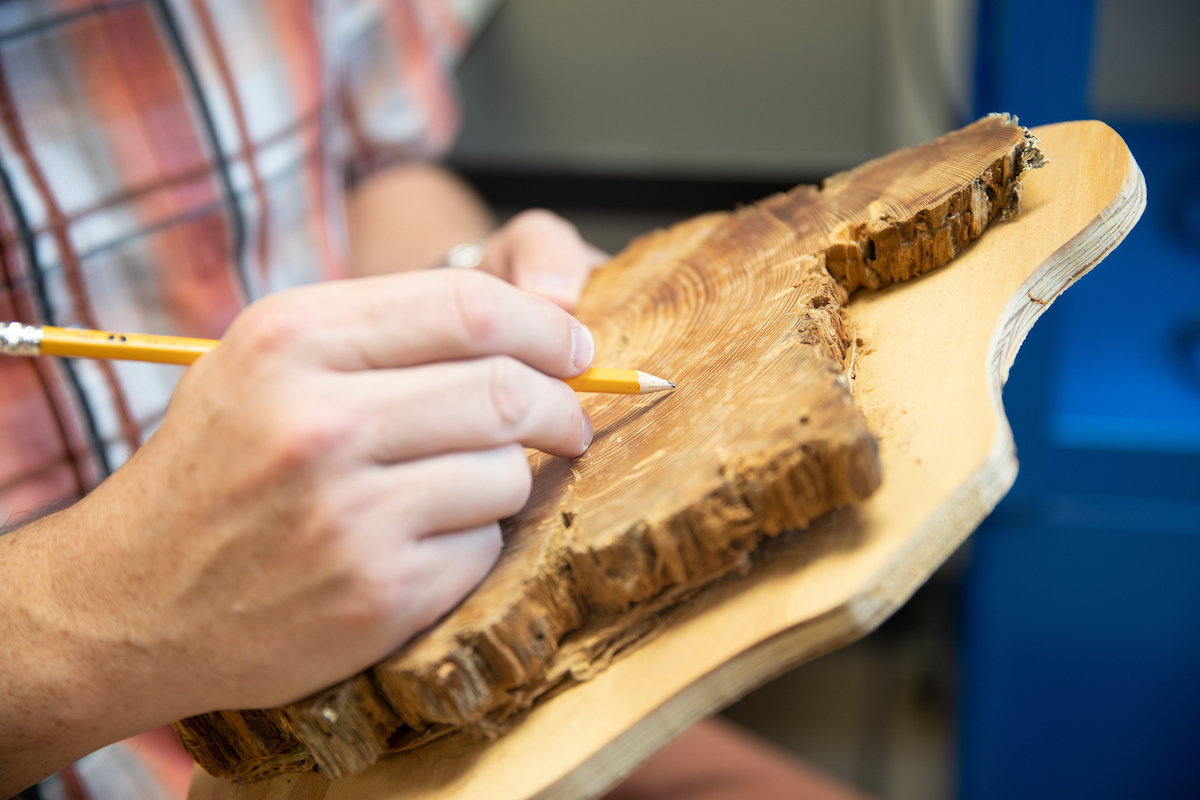National Geographic picks Austin Peay professor as state’s geography steward

(Posted Oct. 25, 2018)
Dr. Chris Gentry doesn’t know why his grandmother had the globe, the atlases or the subscription to National Geographic.
“I had no idea where some of the stuff came from,” he said. “But when I was a kid, we’d go to her house, and I would sit and spin the globe, put out my finger, stop it someplace and go, ‘What’s up with Greenland?’”
Gentry’s time with the globe, atlases and magazines sparked a curiosity for geography that led him to pursue degrees in the discipline, culminating in his becoming associate professor of geography at Austin Peay State University.
His geographic journey has come full circle, bringing him back to those magazines his grandmother used to have.
National Geographic recently picked Gentry to be Tennessee’s steward in a new national program “doubling down on (the National Geographic Society’s) commitment” to improve K-12 geography education in the United States.
“It’s cool to be involved with the National Geographic Society because I do think they probably prompted me to think about the world spatially early on,” Gentry said.
WHAT IS A GEOGRAPHY STEWARD?

The National Geographic State Geography Steward Program, which launched in 2017, assigns a top geographer in each state to connect with state officials, educators and stakeholders to improve K-12 geography education.
The stewards also participate in outreach efforts in their states, such as participating in the National Geographic GeoBee.
“We’re going to develop an advisory board in the state that’s made up of everyone from college professors to K-12 teachers to administrative-level folks -- I hope somebody in the state’s Department of Education -- to discuss what we can do with geography standards in this state,” Gentry said.
Gentry also will work on the regional and national level, connecting with one of six regional directors in the stewardship program and stewards in surrounding states. He will attend the National Geographic Education Summit Oct. 28-29 in Washington, D.C.
RAISING THE GEOGRAPHY STANDARD

Tennessee used to require stand-alone geography classes in third and seventh grades and high school. The state dropped the seventh-grade and high school requirements in 2013 (geography still is offered as an elective in high school). Geography is included in other social studies classes, such as history, but not as its own class, Gentry said.
“A very small number of students leave high school with anything that resembles a geographic education,” Gentry said. “One of the things we’re looking to do is encourage the state to offer more geography in the K-12 curriculum.”
National Geographic’s focus the next two years will be geography education in middle schools.
WHAT IS GEOGRAPHY?

Geography isn’t just place names on maps. It’s science.
“Geography is the study of places and the relationships between people and their environments,” according to National Geographic. “Geographers explore both the physical properties of Earth’s surface and the human societies spread across it.”
“The maps part of the physical geography class we have at Austin Peay is going to be one part of one day. That’s it. The class is 16 weeks long,” Gentry said. “The rest of the time we’re going to be talking about atmospheric science; we’re going to be talking about river systems.
“We talk about how the things you do here on campus can affect the river systems, the Cumberland Watershed, the Red River Watershed,” he added.
Gentry’s research is in dendrochronology, the study of tree rings to determine current or past environmental behavior in the area.
“I’m more of a disturbance ecologist,” he said. “I look at fire across the landscape. I look at ecological disturbances like ice storms or hurricanes, things of that nature with regards to vegetation.”
Gentry was an environmental consultant for three years before entering graduate school and becoming a college professor.
Geographers also can be climatologists, city planners, conservationists and GIS, or geographic information system, specialists.
“Incorporating geography in K-12 education is the way to prepare students for some of these future jobs that are going to be available doing spatial analysis,” Gentry said.
TO LEARN MORE
- The National Geographic Education Summit will have a livestream 7 p.m. Oct. 29. You can watch it here.
- To learn more about the National Geographic State Geography Steward Program, go here.
- Gentry works closely with the Tennessee Geographic Alliance. Find out more about the group here.
- What the heck is geography anyway? Learn more here.